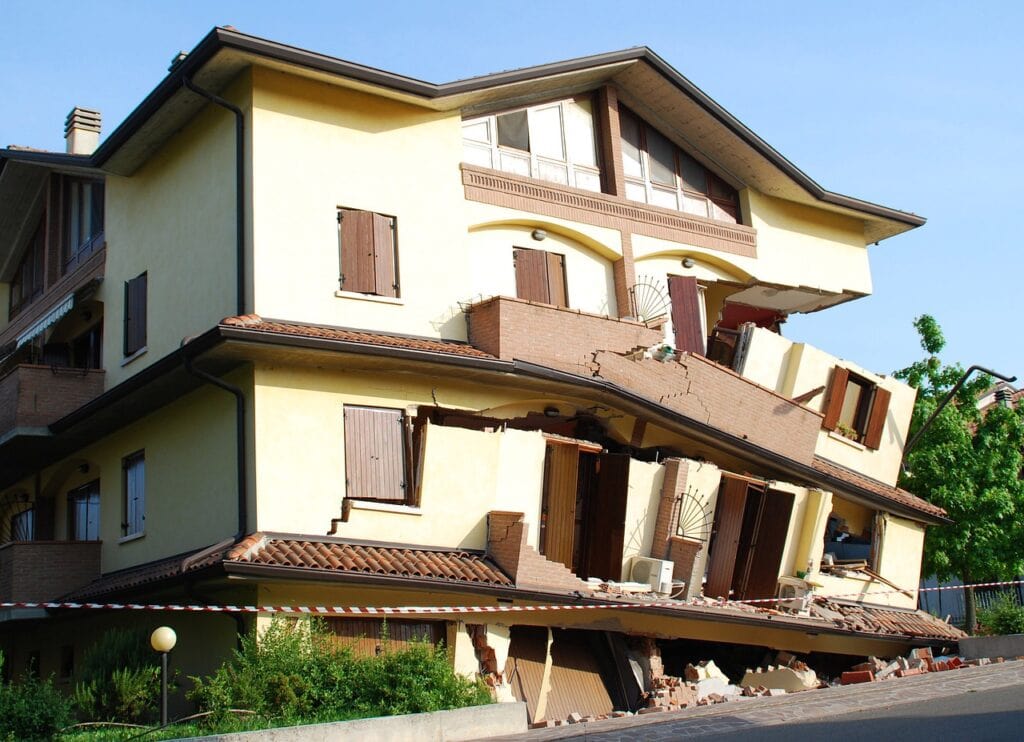7 Biggest Earthquakes In History (Around the World)
-
Pete Ortiz
- Last updated:

Earthquakes are some of the most destructive and devastating natural disasters in the world. They can cause massive destruction, death, and economic losses on a massive scale.
In this article, we’ll take a look at the seven biggest earthquakes in history, their magnitude, and location, as well as some of the destruction they caused. By understanding these events, we can better prepare ourselves for future earthquakes and their impacts.
The 7 Biggest Earthquakes In History
1. Valdivia Earthquake
| Year | 1960 |
| Magnitude | 9.5 |
| Causalities | 1,655 |
The Valdivia Earthquake was the most powerful earthquake ever recorded on earth. It struck southern Chile with a magnitude of 9.5 and caused massive destruction in cities like Valdivia, Puerto Montt, and Concepción.
This incredible quake triggered massive tsunamis that reached as far away as Japan, causing additional fatalities and destruction. The earthquake caused 1,655 deaths and $550 million (nearly $5 billion today) of damage.
2. 1964 Great Alaska Earthquake
| Year | 1964 |
| Magnitude | 9.2 |
| Causalities | 131 |
The Great Alaskan Earthquake was the second-largest ever recorded on earth. It struck south-central Alaska in 1964 and had a magnitude of 9.2.
In the aftermath of this 9.1 earthquake was great destruction, including landslides, ground fractures, and tsunamis that devastated much of the Alaskan coastline. In the end, the earthquake killed 131 people and caused $311 million ($2.5 billion today) of damage to property.
3. Sumatra Earthquake
| Year | 2004 |
| Magnitude | 9.1 |
| Causalities | 227,898 |
The Sumatra Earthquake was one of the deadliest earthquakes in history. It struck off the west coast of Sumatra with a magnitude of 9.1, producing devastating tsunamis in the Indian Ocean.
The earthquake and subsequent tsunamis killed over 227,898 people and caused billions of dollars in damages. It stands as one of the deadliest natural disasters in recent history, having a long-lasting impact on the region.
4. Tohoku Earthquake
| Year | 2011 |
| Magnitude | 9.1 |
| Causalities | 15,894 |
The Tohoku Earthquake is known to be one of the strongest earthquakes ever recorded in Japan. It’s also one of the costliest natural disasters in history.
It struck off the east coast of Tohoku and was followed by a large tsunami that caused extensive damage in Japan and other countries. More than 15,000 people were killed in the earthquake and its aftermath.
5. Offshore Maule Earthquake
| Year | 2010 |
| Magnitude | 8.8 |
| Causalities | 525 |
The Offshore Maule Earthquake struck off the coast of Maule, Chile, in February 2010, causing extensive destruction and shaking buildings as far away as Buenos Aires.
It was one of the biggest earthquakes ever recorded in Chile, with a magnitude of 8.8 on the Richter scale. More than 525 people were killed, and tens of thousands more were displaced due to this earthquake.
6. Assam-Tibet Earthquake
| Year | 1950 |
| Magnitude | 8.6 |
| Causalities | 780 |
The Assam-Tibet Earthquake was one of the most destructive in Indian history, causing immense destruction and killing more than 780 people. It struck a region near the borders of Assam and Tibet, with its epicenter located in Tibet.
The earthquake triggered landslides, which led to massive destruction of lives and property. It was followed by several smaller earthquakes, causing more destruction in the region.
7. Unimak Island Earthquake
| Year | 1946 |
| Magnitude | 8.6 |
| Causalities | 165 |
The Unimak Island Earthquake of 1946 was one of the most powerful earthquakes ever recorded in North America. It struck off the Alaskan peninsula and had a magnitude of 8.6 on the Richter scale.
More than 165 people were killed, and over 1,000 buildings were destroyed or damaged in the earthquake and its aftermath. The quake also triggered a tsunami that caused extensive destruction in Unimak Island and other parts of Alaska.
This earthquake is considered to be one of the most powerful earthquakes ever recorded in the United States.
 What Causes Earthquakes?
What Causes Earthquakes?
Earthquakes occur when tectonic plates—large, flat slabs of the earth’s crust—slip and move past each other in a process known as “plate tectonics.” The slipping often occurs very quickly, releasing vast amounts of energy that travels in waves through the earth’s surface.
These seismic waves are what we feel as an earthquake. Earthquakes can also be caused by other phenomena, including volcanoes and certain human activities, such as the detonation of explosives or changes to underground water tables.
While scientists cannot predict exactly when or where an earthquake will occur, they have developed models to understand where earthquakes are likely to happen in the future.
Understanding these models is important for establishing safety protocols and preparing for a potential earthquake.
Knowing the types of seismic waves, understanding the possible effects, and learning about the local geology can help people stay safe during an earthquake. Developing plans ahead of time to prepare yourself and your family is key to staying safe during an earthquake.
In addition to building an emergency kit, it is important to know how to respond when an earthquake does strike. Keep reading for tips on what you can do to stay safe during an earthquake.

Earthquake Survival 101
Earthquakes can cause immense destruction and many fatalities if individuals are unprepared. However, by taking the proper precautions, it is possible to survive an earthquake. The following are some essential tips for surviving an earthquake:
Drop to the Ground
Immediately drop to your hands and knees and position yourself under a strong piece of furniture such as a table or desk. If no such furniture is available, crouch in an interior corner of the room away from windows and heavy furniture.
Cover Your Head and Neck
Protect your head and neck with your arms by tucking them against your chest. Remain in this position until the shaking stops.

Stay Inside
Do not attempt to exit the building during the shaking. Stay inside and take refuge in an interior room or hallway away from windows, heavy furniture, and other potential hazards.
Secure Your Surroundings
Once the shaking stops, inspect your environment for any immediate dangers, such as broken glass, fallen objects, or gas leaks. Be aware that aftershocks can occur and be just as destructive as the initial quake.

After an Earthquake
If you are outside when the earthquake strikes, move away from buildings and power lines. Avoid hillsides that could be prone to landslides and any area near the ocean, as tsunamis can occur after a major quake.
Seek medical attention for anyone with injuries and contact your local emergency services if necessary. Finally, check for updates from local authorities and follow their instructions.
By taking the above precautions, you can increase your chances of survival in an earthquake. Remember to stay calm and never panic, as this could put yourself and others at risk. With proper knowledge and preparation, it is possible to make it through an earthquake unscathed.
 Conclusion
Conclusion
These are just a few of the biggest earthquakes in history. Knowing more about them can help us better prepare for future disasters and the potential destruction they can cause.
Understanding what happened in the past is critical to protecting ourselves, our families, and our communities from similar events in the future.
See also:
Featured Image Credit: Kiwi_Lisa, Pixabay
Contents


